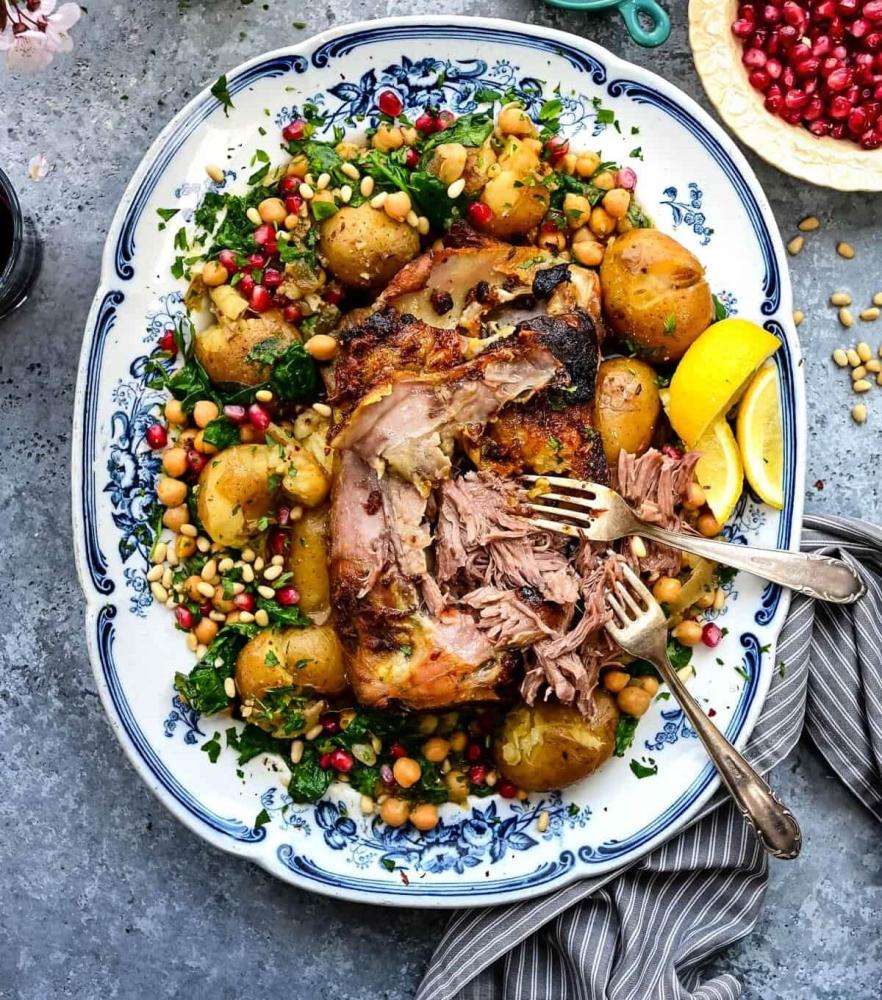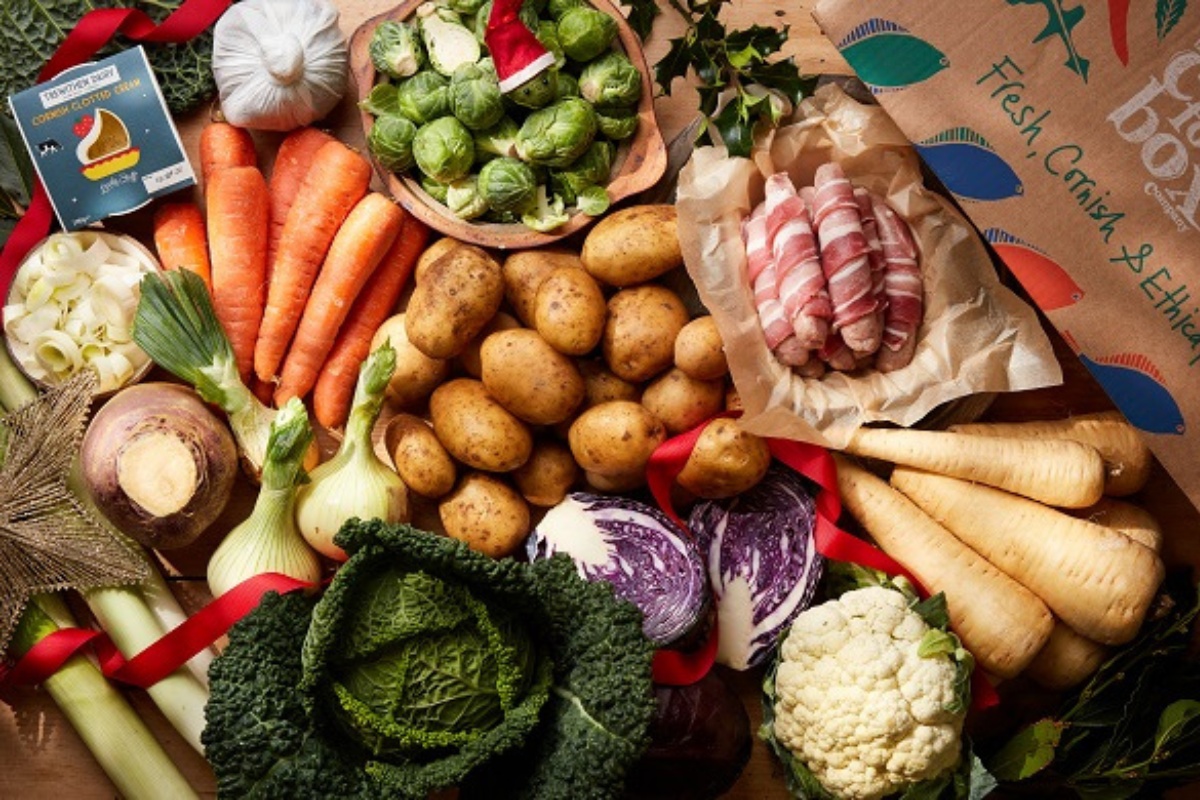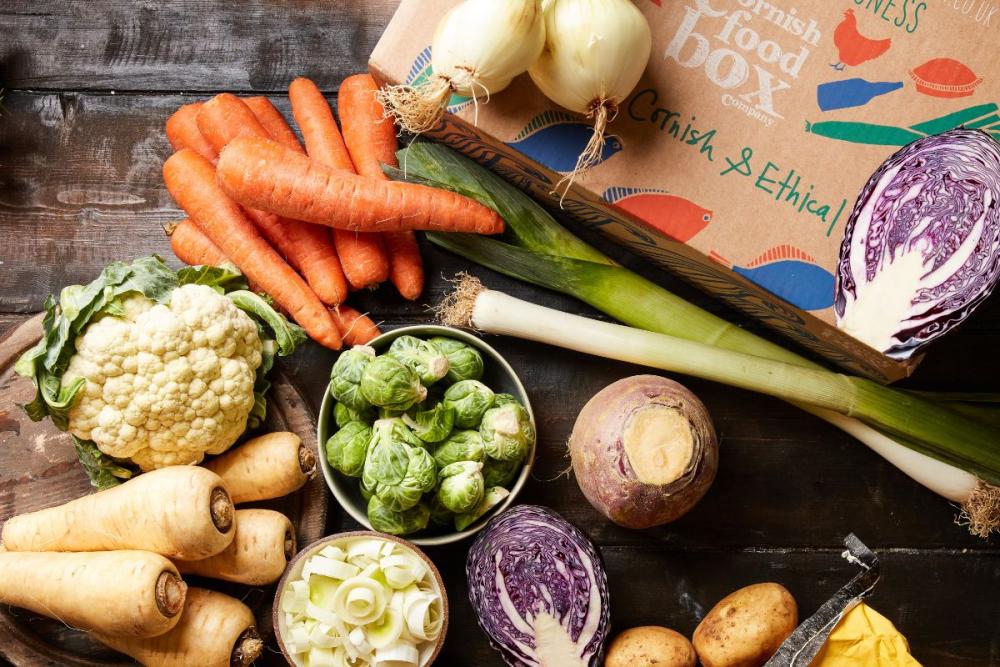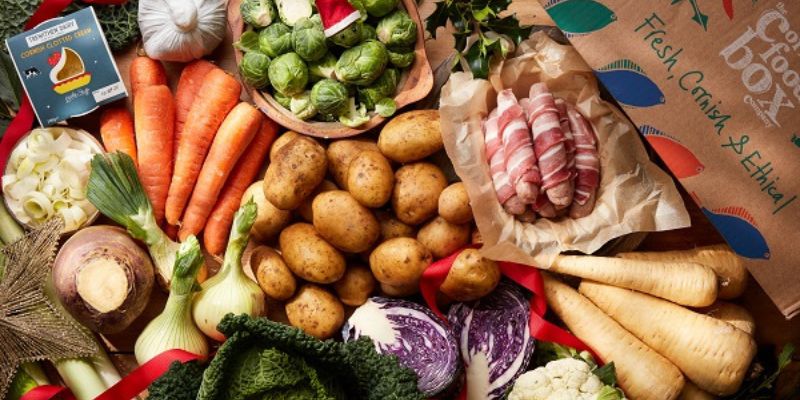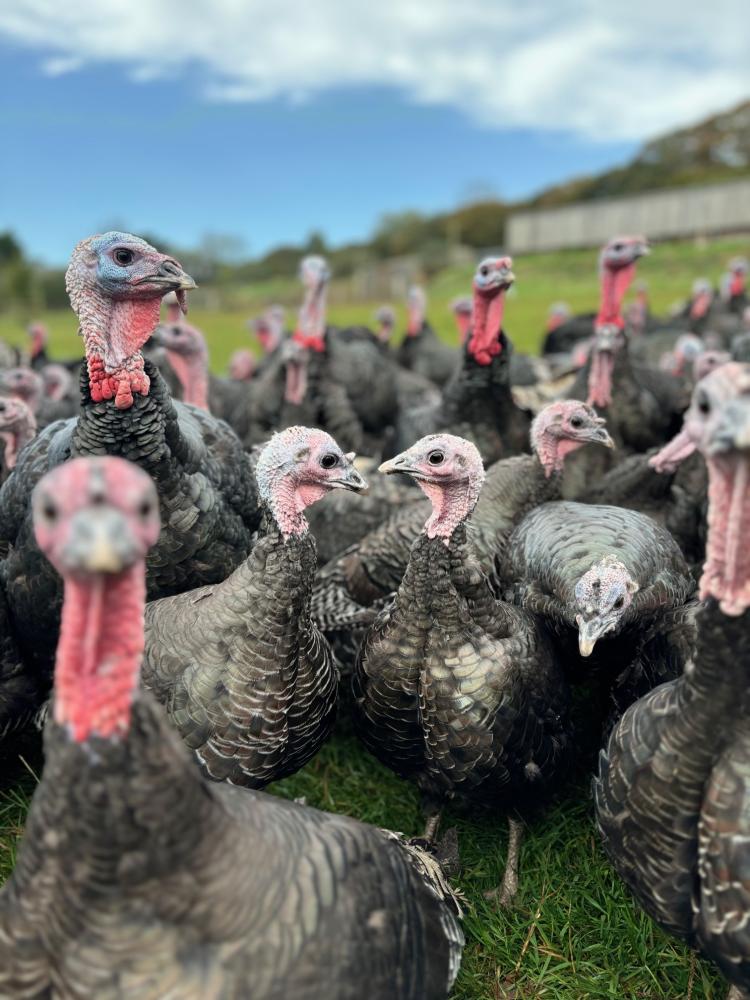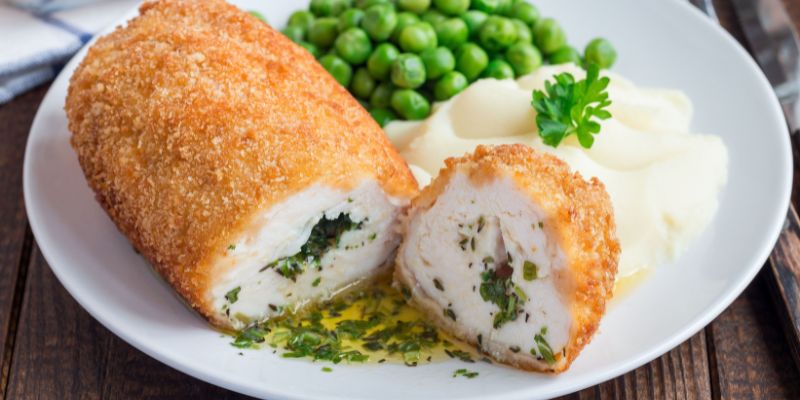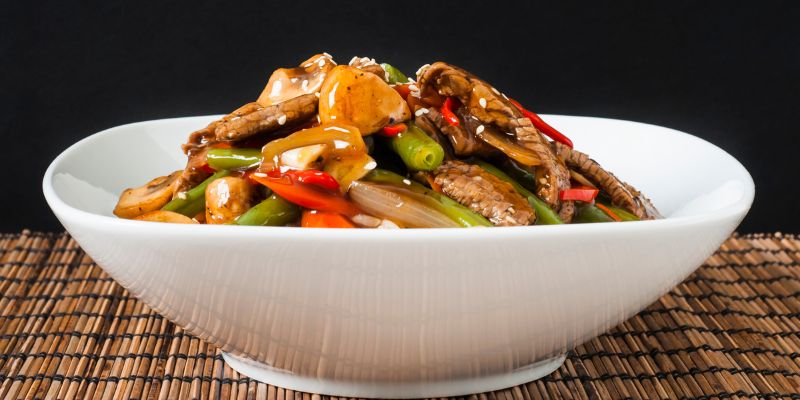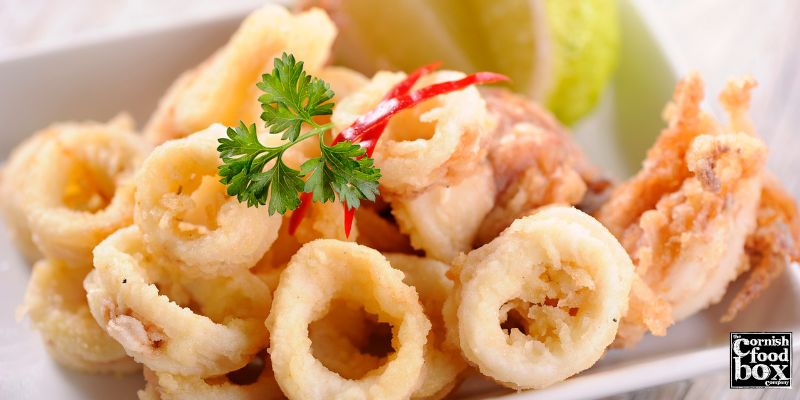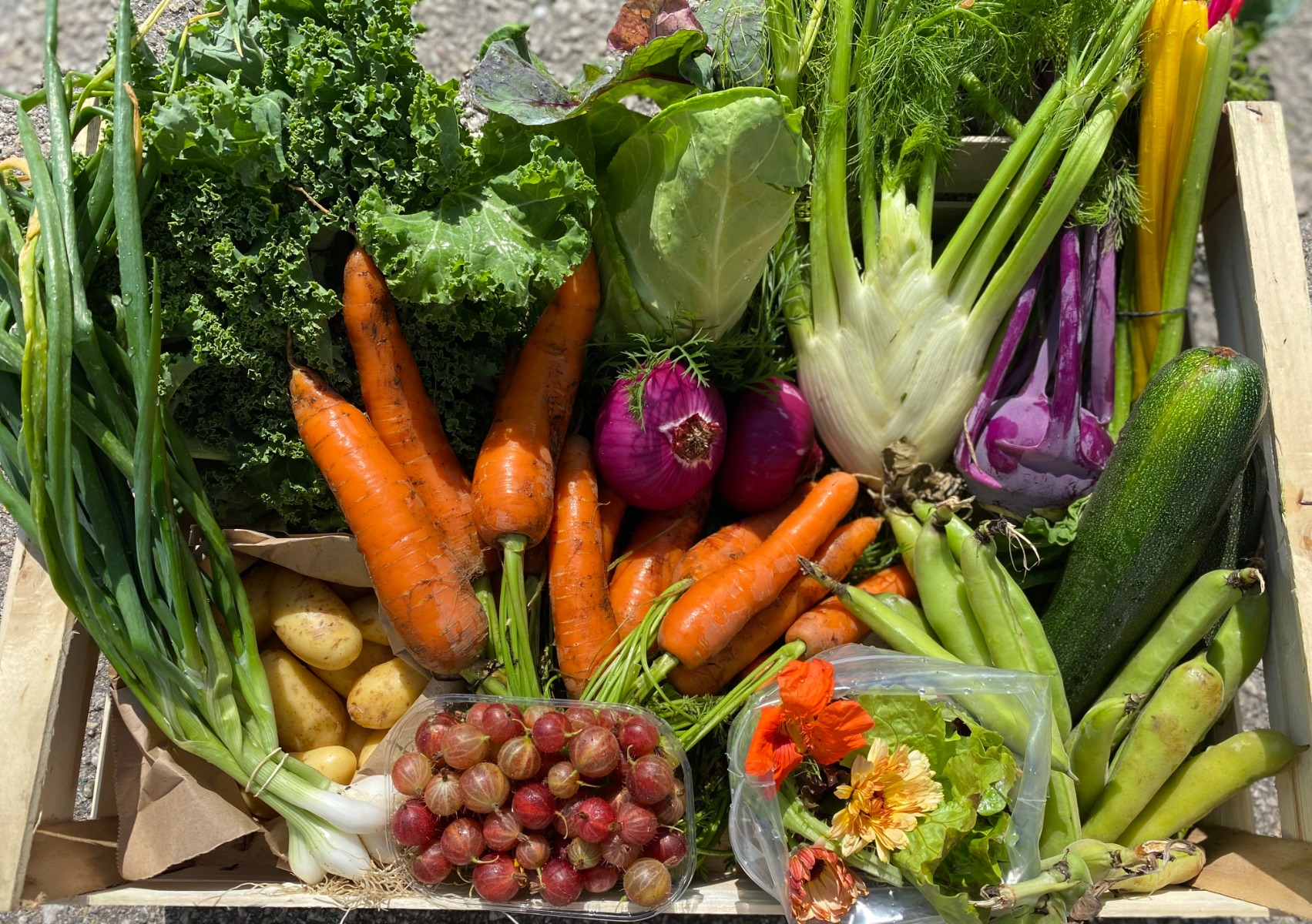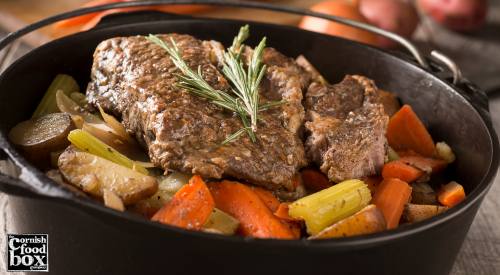Spiced Roast Cornish Lamb
A fantastic spiced lamb recipe which works well with the slow cook of a lamb shoulder.
Perfect for wintery Sunday roasts or summer evening meals with friends!
You will need:
- 2.5kg leg or shoulder of lamb
- zest and juice of 1 lemon
- zest and juice of 1 lime
- 2-3 spring onions, roughly chopped
- 1 garlic bulb, cloves peeled
- 15g parsley, chopped
- 10g root ginger, finely chopped
- a few sprigs of thyme, leaves picked
- 1½ tbsp Cornish sea salt
- 2 tsp freshly ground black pepper
- 2 red chillies, chopped
- 1 tsp ground cloves
- 1 tsp ground allspice
- 3-4 tbsp olive oil
To make:
Prepare the lamb to the end of step 6 the day before.
- Start this recipe the night before: place the lamb leg in a deep container and cover with cold water. Add half of the lime and lemon juice to the bowl, then set aside while you prepare the fresh green seasoning.
In a pestle and mortar, or a blender, add the remaining citrus juices, the citrus zests, spring onions, garlic cloves, parsley, ginger, thyme, salt, pepper, chilies, ground spices and olive oil, then blend until smooth.
Drain the lamb from the water and pat dry with kitchen paper, then score the skin by making diagonal cuts across the leg using a sharp knife.- Place in a foil-lined roasting tin.
Spoon the fresh green seasoning all over the meat, rubbing it into the scored parts to ensure it goes deep into the meat.
Cover with a sheet of baking paper then foil, ensuring it is sealed tightly, then leave in the fridge to marinate overnight.
When you are ready to roast, remove the lamb from the fridge and preheat the oven to 180°C, fan 160°C, gas 4.
Slow-roast on the middle shelf (with the coverings on) for 2–2½ hours or until the meat starts to come away from the bone easily; it may take longer, depending on your oven.- Once the meat is tender, remove the baking paper and foil then return to the oven to crisp up for a final 10 minutes. Leave to rest for at least 20-30 minutes before serving with your favourite sides.

